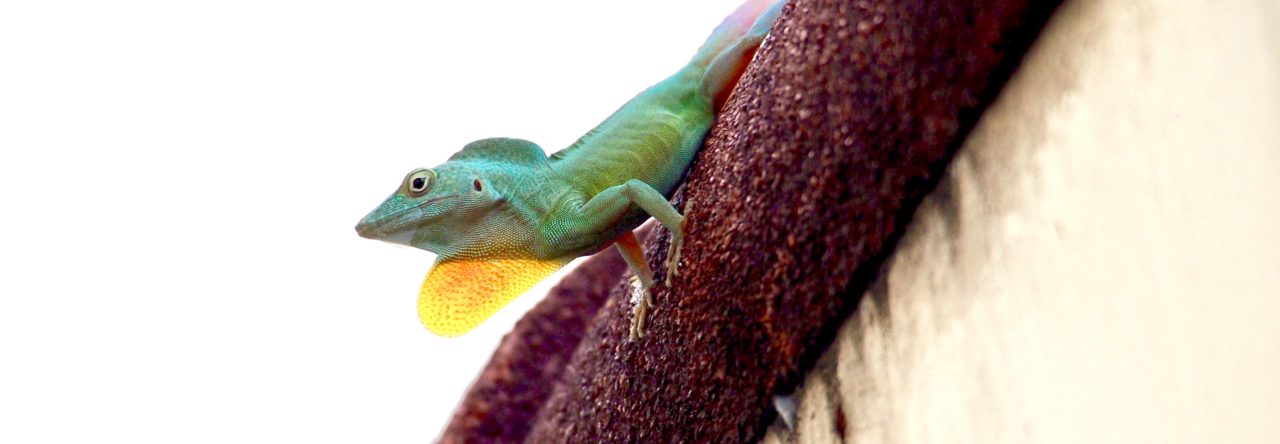This post is by Holly Brown, a grad student at UConn studying the visual ecology of wading birds.
I spent the day filming herons at the Florida Keys Wild Bird Center, in Key Largo, FL. While changing positions to get a better view of interesting foraging behaviors of a juvenile Little Blue Heron and a Snowy Egret — head-tilting and foot-raking, respectively — I noticed a mad dash on the ground, ahead of the path I walked. I looked down, and a little anole had scrambled from the shoreline over to take cover in some mangrove roots, which were protruding out of the mud. I didn’t think much of this at first. I continued to walk along the shoreline, to follow a foraging white morph Great Blue Heron. I began to walk back toward the territory of the little anole, and noticed, yet again, a mad dash at ground level, from the shoreline into the mangrove roots. Thinking it might be odd to see an anole at the water’s edge I tried to find the well-camouflaged lizard amidst the vegetation. What I found was a lizard the size of an anole, but with a seemingly large, round head. Upon further examination, I realized that it was two heads–one anole head and one fish head! The anole had caught a minnow, and the poor little minnow’s head was sticking out of its mouth…gills still flapping and all.




















